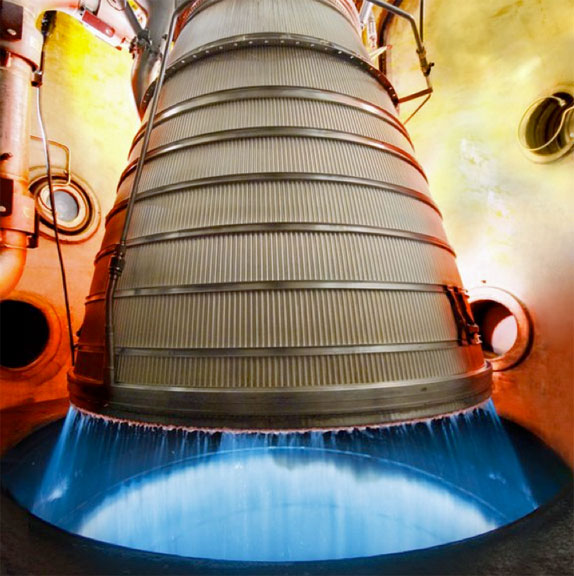[Satnews] Aerojet Rocketdyne, a subsidiary of Aerojet Rocketdyne Holdings, Inc. (NYSE:AJRD), marked another major milestone in its ongoing effort to incorporate additive manufacturing technology into its products by completing a series of successful hot-fire tests of its RL10 upper-stage rocket engine.

Aerojet Rocketdyne successfully tests their 3-D printed injector.
Photo courtesy of Aerojet Rocketdyne.
The RL10 development engine, dubbed XR708, included a core main injector built using additive manufacturing technology, often referred to as 3-D printing. The work was done in conjunction with the U.S. Air Force and NASA’s Glenn Research Center as part of the RL10 Additive Manufacturing Study (RAMS) program, which aims to demonstrate the capability of additively manufactured complex parts and qualify them for use in large rocket engines.
The core main injector was fabricated using an additive manufacturing technology known as selective laser melting (SLM). SLM is essentially a micro-welding technique that uses a high-powered laser beam to fuse powdered metal to form detailed components that can perform under the extreme pressures and operating conditions of rocket engines.
“Updating our products to take advantage of the advancements we’ve made in additive manufacturing technology is a key part of our strategy to deliver more affordable products to our customers while at the same time maintain the reliability they’ve come to expect,” said Aerojet Rocketdyne CEO and President Eileen Drake. “This successful series of tests validates the rigorous approach we’ve been taking and confirms we are on the right path. Incorporating this technology will enable us to reduce significantly production lead times and make our products more cost competitive.”
“While we have had success developing additive manufacturing technology for a broad range of products—from discrete engine components to hot-fire testing engines and propulsion systems made entirely with additive manufacturing—this is among the most complex components we have tested in a large rocket engine to date,” said Dr. Jay Littles, director of Advanced Launch Programs at Aerojet Rocketdyne. “However, we’ve just scratched the surface of what this technology will do to revolutionize our industry. Our design engineers are just starting to take advantage of the expanded possibilities enabled by this new manufacturing technology. They are now free to design products that were once thought impossible to build due to the constraints of traditional manufacturing.”


